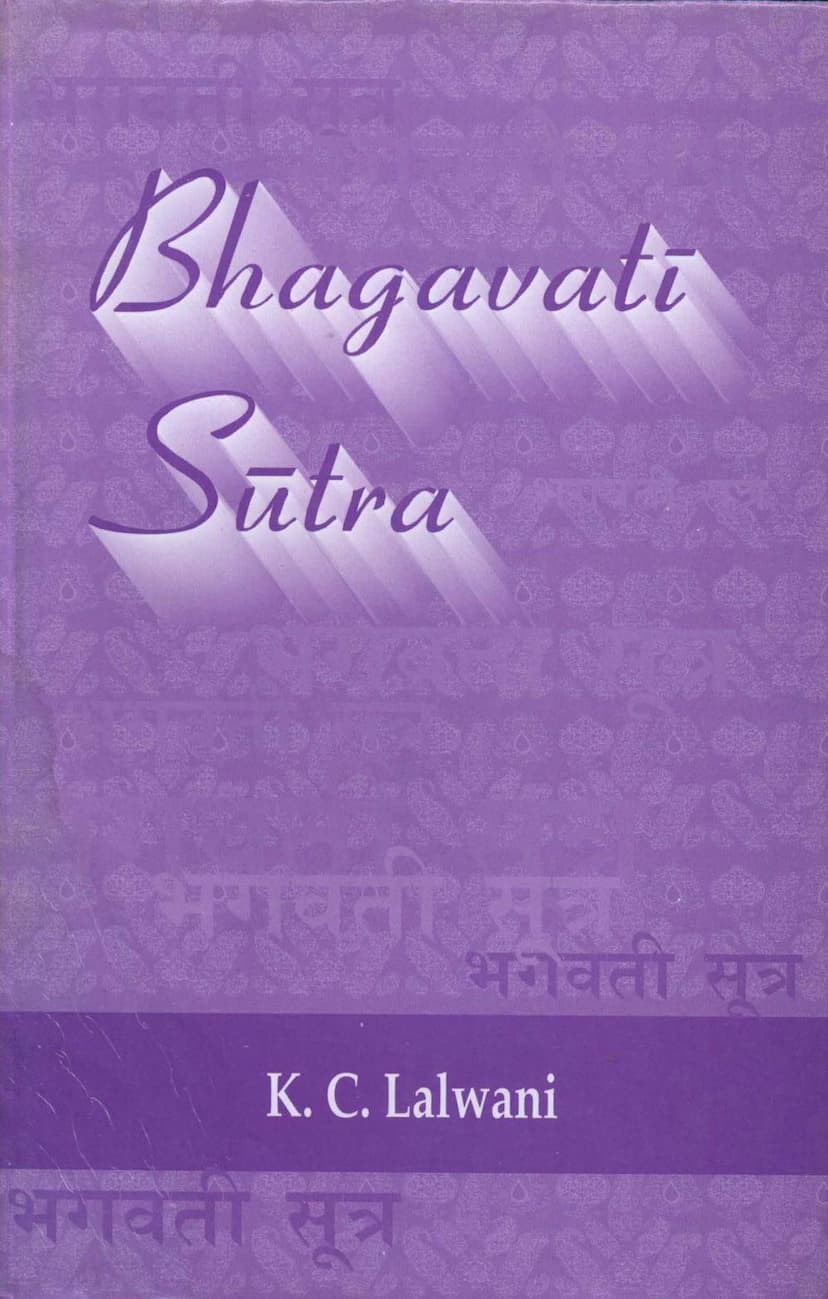Agam 05 Ang 05 Bhagvati Vyakhya Prajnapti Sutra Part 02
Added to library: September 1, 2025

Summary
This document is the second part of the English translation of the Bhagavati Sūtra, specifically covering Śatakas (centuries) 3 through 6. Translated by K. C. Lalwani, it is published by Jain Bhawan Publication. The translation is based on the commentary of Abhayadeva Suri.
The book delves into various aspects of Jain philosophy and cosmology, including detailed descriptions of celestial beings, their abodes, hierarchies, and powers, particularly focusing on the Indras (celestial rulers) and their interactions. It also explores concepts such as:
Cosmology and Celestial Beings:
- Indras and their Hierarchies: The text provides extensive accounts of different Indras, their vimānas (celestial abodes), Sāmānikas (almost equal celestial beings), principal consorts, and assemblies. Notable Indras discussed include Camara (Asurendra), Vairocanendra (Bali), Dharanendra (Nāgakumāra), Sakrendra (Deva), and Iśānendra.
- Lokapālas: The lords of the directions under the Indras are also detailed, with discussions on their abodes and powers.
- Celestial Abodes: Various heavens (kalpas) and their vimānas are described, including their size, inhabitants, and lifespan of the celestial beings.
Metaphysics and Philosophy:
- Nature of Reality: The text touches upon the nature of matter (pudgala), its smallest indivisible unit (paramāņu), and the Jaina concept of time (Kāla) as a substance.
- Supernatural Powers: It discusses supernatural powers like vikurvaņā (transformation) and samudghāta (quick transformation) possessed by various beings.
- Karma: The text elaborates on karma, its types, bondage, and exhaustion, explaining how actions influence one's lifespan and experiences.
- Soul and Existence: Discussions include the lifespan of beings, movement with lifespan, and the concept of bondage.
- Cause and Non-Cause: The text engages in discussions on logical principles like cause and non-cause.
- Tinges (Lesse): The text explores the concept of tinges associated with different categories of beings and their impact on their existence and rebirth.
- Renunciation: The importance and implications of renunciation in the Jain path are discussed.
Cosmology and Geography:
- Jambūdvipa and Other Isles: Detailed descriptions of Jambūdvipa, the Salt Sea, Dhātakikhanda, Puşkarārdha, and other geographical divisions of the universe are provided, including their dimensions and encircled nature.
- Celestial Phenomena: Discussions on sun-rise and sun-set, the measures of day and night, rains, winter, and winds are presented from a Jaina cosmological perspective.
- Tamaskāya and Krsnarāji: These concepts, related to dark matter and dark formations, are introduced, with their characteristics and locations described.
Specific Events and Discussions:
- Mahāvīra's Life: An interesting account of an event in Mahāvīra's life is recorded, where he provided shelter to Camara, the Indra of the Asurakumāras, during his conflict with Sakra.
- Discussions with Senior Monks: The text portrays dialogues between Mahāvīra and senior monks from the order of Pārśva, leading to their unification with Mahāvīra's order.
- Phenomenology and Natural Phenomena: There are discussions on phenomena observed south of Mount Meru, including elements related to nature like weather, soil, and biological capacities.
- Atomic Physics and Time Concepts: Mahāvīra's views on atomic physics, including the concept of paramāņu (smallest indivisible unit of matter), and on time, including the smallest unit called samaya, are presented.
The Translator's Foreword highlights:
- The presence of much mythology in Satakas 3 and 4, concerning various Indras and celestial beings.
- The identification of celestial beings as a distinct category with its own hierarchy and behavior, a unique contribution of Jainism.
- The phenomenological account of the region south of Mount Meru, containing natural phenomena and technical terms.
- The theological significance of gods in Jainism, noting that while they exist, there is no Creator God.
- The scientific relevance of discussions on sunrise, sunset, and the measures of day and night, although some views might not align with modern science (e.g., two suns over Jambūdvīpa).
- The discussion on life-span as a result of karma.
- The interpolation on embryology, referencing the transfer of Mahāvīra's embryo.
- The profound discussions on atomic physics and time, predating similar concepts in Europe.
- The unification of the order of Pārśva monks with Mahāvīra's order.
- The introduction of concepts like tamaskāya and krsnarāji for physical geographers to identify.
The book is structured into Satakas (centuries) and further divided into Uddeśas (chapters), covering a vast range of topics with intricate details and technical terminology. The translation aims to make these profound Jain teachings accessible to English readers.